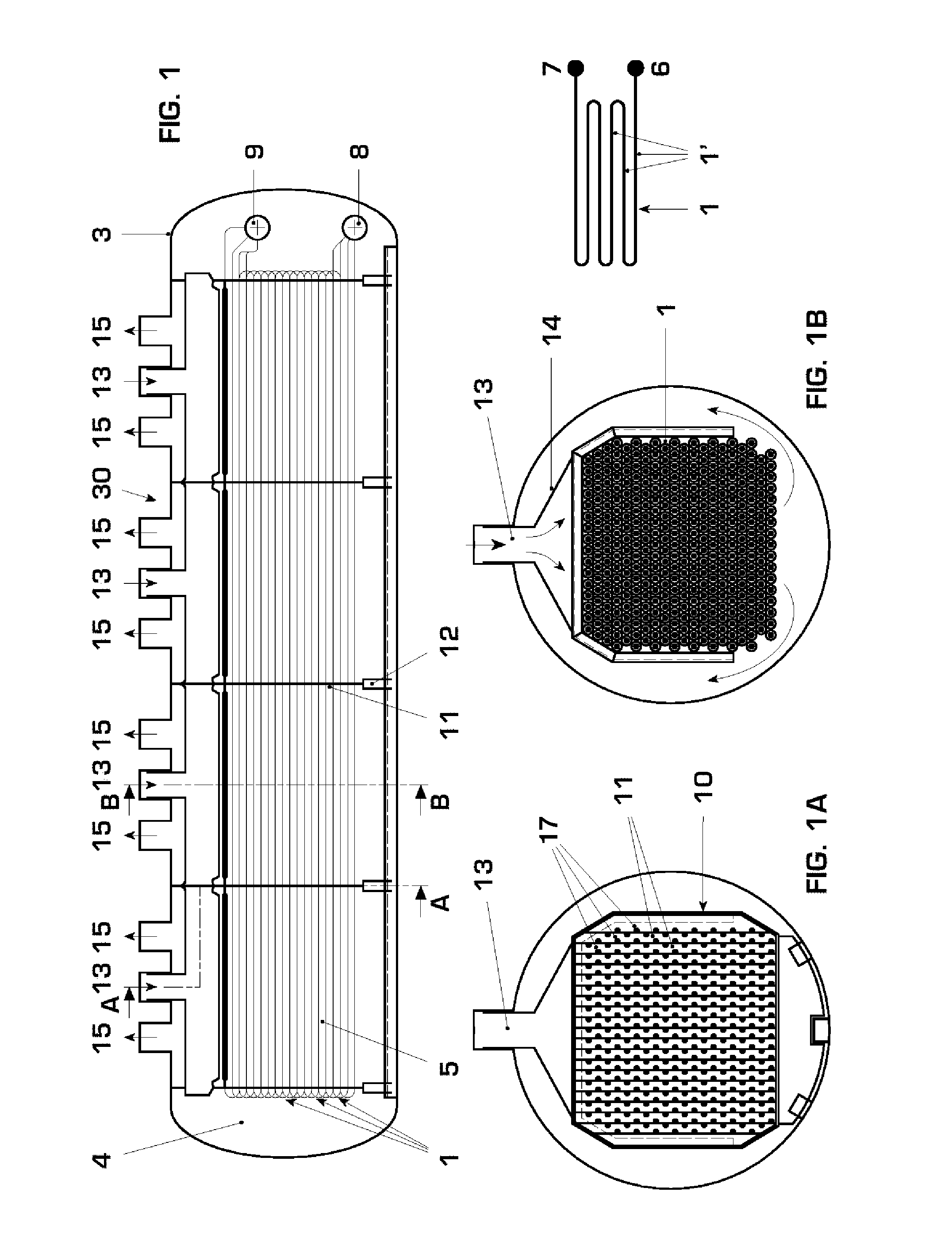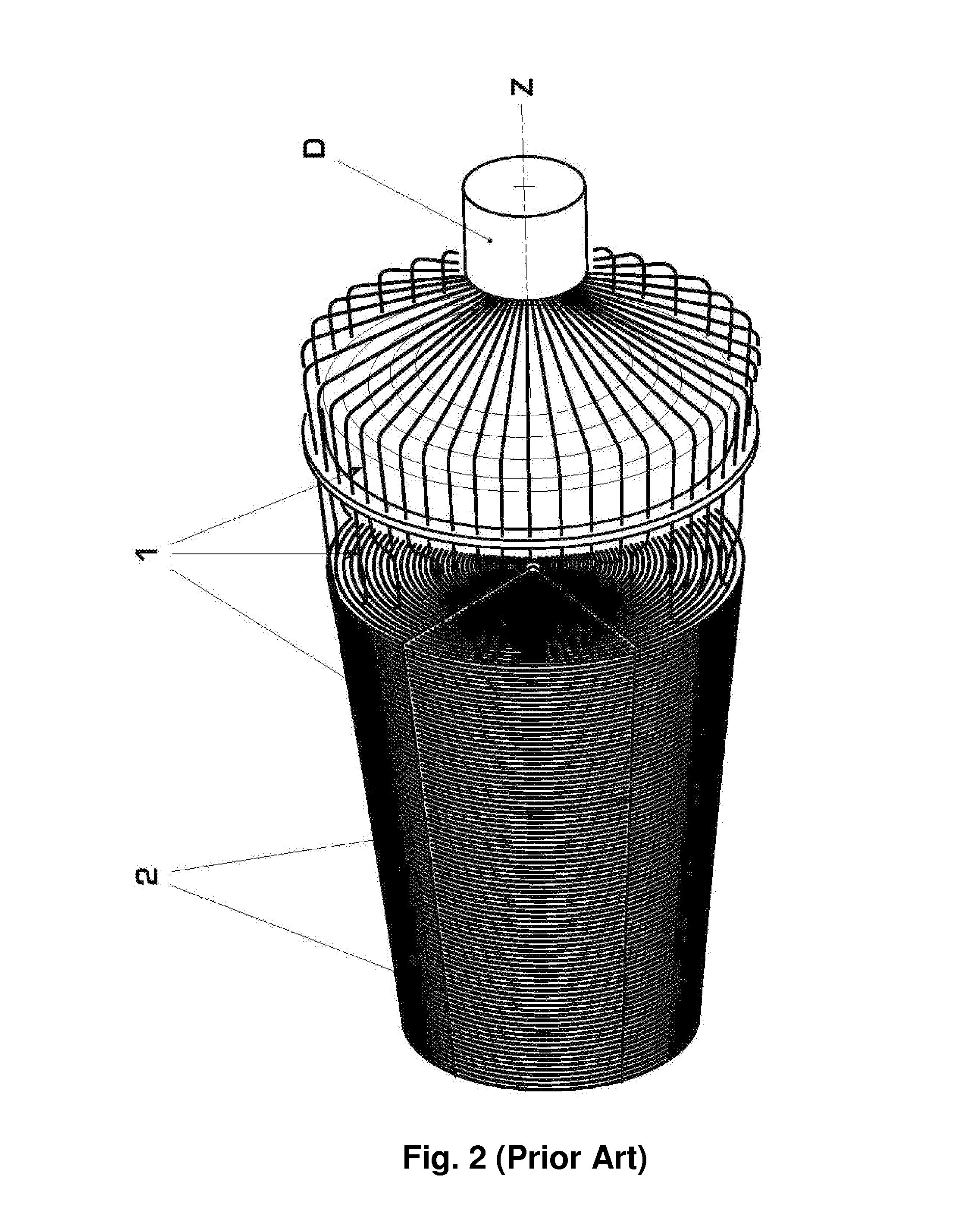Steam generator
a generator and steam technology, applied in the direction of steam generation using hot heat carriers, ignition automatic control, lighting and heating apparatus, etc., can solve the problems of high labor intensity, high labor intensity, and high labor intensity, and achieve the effect of reducing labor intensity, reducing labor intensity, and reducing labor intensity
- Summary
- Abstract
- Description
- Claims
- Application Information
AI Technical Summary
Benefits of technology
Problems solved by technology
Method used
Image
Examples
Embodiment Construction
FIG. 1 shows a longitudinal cross section through a cylindrically formed pressure casing 3, which, in the exemplary embodiment which is shown, has a circular cross section; see also, concerning this, the split drawings according to FIGS. 1A and 1B, which in each case show cross-sectional views along the sectional planes A and B which are drawn in FIG. 1. The pressure casing 3 optionally has a round, oval, or polygonal cross section. The pressure casing 3, which is formed in the fashion of a cylinder, encloses an inner volume 4 in which is introduced a hollow tube arrangement 5 which includes a plurality of individual hollow tubes 1. The hollow tube arrangement 5, which includes a plurality of individual hollow tubes 1, provides for individual hollow tubes 1 which are arranged next to each other, which, in their turn, include a plurality of hollow tube sections 1′ which are arranged vertically above each other, as this is apparent in a very schematized manner from the sub-figure acco...
PUM
 Login to View More
Login to View More Abstract
Description
Claims
Application Information
 Login to View More
Login to View More - R&D
- Intellectual Property
- Life Sciences
- Materials
- Tech Scout
- Unparalleled Data Quality
- Higher Quality Content
- 60% Fewer Hallucinations
Browse by: Latest US Patents, China's latest patents, Technical Efficacy Thesaurus, Application Domain, Technology Topic, Popular Technical Reports.
© 2025 PatSnap. All rights reserved.Legal|Privacy policy|Modern Slavery Act Transparency Statement|Sitemap|About US| Contact US: help@patsnap.com



